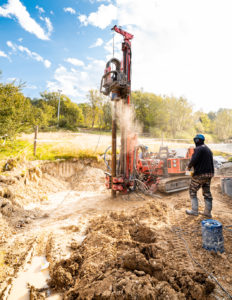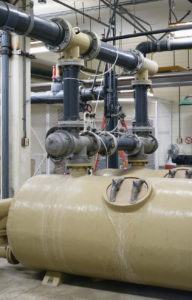- What is Biomass?
- How Do Biomass Generators Work?
- Advantages of Biomass Generators
- Challenges and Considerations
- Applications of Biomass Generators
Biomass generators offer a promising solution to both waste management and renewable energy production. By converting organic waste materials into energy, these generators can contribute to reducing environmental pollution and dependence on fossil fuels. Let’s explore the potential of biomass generators and how they can be harnessed to generate wattage from waste.
What is Biomass?
Biomass is a versatile energy source that encompasses a wide range of organic materials derived from plants or animals. It includes various forms of waste materials, offering a sustainable solution for waste management and energy production. Agricultural residues such as crop stalks and straw, as well as forestry residues like sawdust and wood chips, are commonly utilized as biomass feedstock. Additionally, energy crops such as switchgrass and miscanthus, which are specifically grown for their energy content, contribute to the biomass resource. Animal manure, food waste, and even sewage sludge can also be transformed into biomass for energy generation.

One of the key advantages of biomass is its renewable nature. As organic matter, biomass can be naturally replenished through processes like photosynthesis and biological decomposition. While fossil fuels deplete finite resources, biomass provides a sustainable alternative by utilizing materials that can be continuously grown and harvested. This characteristic distinguishes biomass from non-renewable energy sources and positions it as an environmentally friendly option.
Moreover, the utilization of biomass contributes to the reduction of greenhouse gas emissions. When biomass is burned or gasified for energy production, it releases carbon dioxide (CO2) into the atmosphere. However, the carbon emitted during combustion is offset by the carbon absorbed during the growth of the biomass feedstock. This carbon-neutral or low-carbon cycle helps mitigate the impacts of climate change and reduces the net carbon footprint associated with energy generation.
How Do Biomass Generators Work?
Biomass generators are versatile energy systems that employ either combustion or gasification processes to convert biomass into usable energy. These processes enable the efficient utilization of biomass feedstock and offer different pathways for energy generation.
In combustion, biomass is burned directly, typically in a controlled environment such as a furnace or boiler. The heat generated from biomass combustion can be used in various applications. One common application is steam generation, where heat is used to produce high-pressure steam. The steam can then drive a turbine connected to a generator, converting the thermal energy into electricity. This steam turbine approach is widely employed in large-scale biomass power plants.
Another application of biomass combustion is the direct use of heat for space heating, water heating, or industrial processes. In such cases, the heat generated by biomass combustion is transferred through a heat exchanger to provide hot water or warm air for heating purposes. Industrial processes that require high temperatures, such as drying or certain chemical reactions, can also benefit from the heat produced by biomass combustion.



Gasification, on the other hand, involves the partial combustion of biomass in a controlled environment with a limited oxygen supply. This process converts the biomass into a mixture of gases known as syngas, which consists primarily of carbon monoxide (CO) and hydrogen (H2). Syngas can be further utilized in multiple ways.
One option is to burn the syngas directly in a boiler or furnace to generate heat, similar to the combustion process. The heat can then be used for various applications as mentioned earlier. Alternatively, the syngas can be utilized in gas engines or turbines to generate electricity. These engines or turbines are designed to run on gaseous fuels and can efficiently convert the chemical energy of the syngas into mechanical energy, which is then converted into electricity by the attached generator.
Gasification offers several advantages, including the ability to handle a wider range of biomass feedstocks, improved efficiency compared to combustion, and the potential for cleaner syngas production with reduced emissions. It is particularly suitable for decentralized or smaller-scale applications, where it can provide electricity or heat in off-grid or remote locations.
Advantages of Biomass Generators
Waste Management
Biomass generators play a crucial role in waste management by offering an efficient solution for converting organic waste into valuable energy. Instead of sending organic waste to landfills or incinerators, where it contributes to environmental pollution and the release of greenhouse gases, biomass generators can harness the energy potential of this waste material, simultaneously addressing waste disposal challenges and promoting renewable energy production.
 Organic waste materials such as agricultural residues, food waste, and animal manure can be utilized as feedstock in biomass generators. These waste materials are abundant and often pose disposal challenges due to their high moisture content, the potential for odor, and the risk of releasing harmful substances when not properly managed. By directing them to biomass generators, these waste materials are transformed into useful energy resources.
Organic waste materials such as agricultural residues, food waste, and animal manure can be utilized as feedstock in biomass generators. These waste materials are abundant and often pose disposal challenges due to their high moisture content, the potential for odor, and the risk of releasing harmful substances when not properly managed. By directing them to biomass generators, these waste materials are transformed into useful energy resources.
For instance, agricultural residues like crop stalks and straw, which are typically left in fields after harvest, can be collected and processed in biomass generators. Instead of being burned or left to decompose, these residues can be converted into heat or electricity. Food waste, another significant component of organic waste, can be diverted from landfills and directed to biomass generators, where it is converted into energy, reducing methane emissions that would otherwise occur in anaerobic decomposition processes. Animal manure, a byproduct of livestock farming, can also be treated as biomass feedstock. Utilizing manure in biomass generators, not only reduces environmental pollution but also provides an additional revenue stream for farmers.
The conversion process in biomass generators involves combustion or gasification, as discussed earlier. The organic waste is subjected to controlled burning or partial combustion to release heat or produce syngas, respectively. This energy can then be harnessed for various purposes, including electricity generation, heating, or powering industrial processes.
The benefits of biomass generators in waste disposal are twofold. First, they significantly reduce the amount of waste sent to landfills, minimizing the environmental impact associated with landfilling, such as methane emissions and land use. Second, they utilize waste materials to produce renewable energy, reducing the dependence on fossil fuels and mitigating greenhouse gas emissions.
Renewable Energy
Biomass is a sustainable energy source derived from organic materials that have the ability to be regrown or replenished. Unlike finite fossil fuel resources, biomass relies on plants, crops, and other organic matter that can be cultivated and renewed through natural processes. For example, energy crops like switchgrass and miscanthus can be grown on agricultural land specifically for biomass production. This regenerative characteristic of biomass ensures a continuous supply of feedstock, making it a renewable resource that can support long-term energy production while reducing reliance on non-renewable fossil fuels.
Carbon-Neutral or Low-Carbon
One significant advantage of biomass energy generation is its carbon-neutral or low-carbon nature when compared to fossil fuels. While the combustion of biomass releases carbon dioxide (CO2) into the atmosphere, the same amount of CO2 is absorbed by plants during their growth through photosynthesis.
This creates a closed carbon cycle, where the carbon emissions from biomass combustion are offset by the carbon sequestration that occurs during the growth of biomass feedstock.
 During photosynthesis, plants absorb CO2 from the atmosphere, utilizing it along with sunlight and water to produce energy and biomass through a chemical process. This carbon is stored within the plant’s tissues, including its stems, leaves, and roots. When biomass is burned as a fuel, the stored carbon is released back into the atmosphere as CO2. However, since the plants used for biomass production continue to grow and absorb CO2, an equivalent amount of carbon is removed from the atmosphere, effectively neutralizing the carbon emissions.
During photosynthesis, plants absorb CO2 from the atmosphere, utilizing it along with sunlight and water to produce energy and biomass through a chemical process. This carbon is stored within the plant’s tissues, including its stems, leaves, and roots. When biomass is burned as a fuel, the stored carbon is released back into the atmosphere as CO2. However, since the plants used for biomass production continue to grow and absorb CO2, an equivalent amount of carbon is removed from the atmosphere, effectively neutralizing the carbon emissions.
This closed carbon cycle sets biomass energy generation apart from fossil fuel combustion, which involves releasing carbon that has been sequestered underground for millions of years. When fossil fuels are burned, carbon that was previously trapped in the form of hydrocarbons is released into the atmosphere, contributing to the accumulation of greenhouse gases and climate change.
By utilizing biomass as an energy source, we tap into a renewable resource that not only provides energy but also actively participates in carbon dioxide absorption and sequestration. This carbon neutrality or low-carbon characteristic of biomass energy helps to mitigate the net greenhouse gas emissions associated with energy production, making it a more environmentally friendly alternative to fossil fuels.
It is worth noting that the carbon neutrality of biomass energy generation depends on sustainable and responsible management practices. Ensuring the sustainability of biomass feedstock production, minimizing land-use change, and protecting ecosystems are essential considerations to maintain the carbon-neutral status and overall environmental benefits of biomass energy.
Distributed Generation



Biomass generators offer the advantage of being able to be established in various locations, enabling distributed energy generation. Unlike large centralized power plants, biomass generators can be implemented closer to the source of biomass feedstock, reducing the need for long-distance transmission of electricity. This decentralized approach brings energy production closer to the communities or industries that require it, minimizing transmission losses and increasing overall energy efficiency. Additionally, it improves grid resiliency by reducing dependence on a single large power source and enhances energy security by diversifying the energy mix.
Baseload Power
Biomass generators are well-suited for baseload power generation due to their ability to provide a continuous and consistent power supply. Unlike intermittent renewable energy sources such as solar or wind, biomass generators can be operated continuously, ensuring a reliable and steady output of electricity. This makes them particularly valuable for meeting the constant and consistent energy demand of industries, businesses, and communities. Biomass generators can serve as a stable and dependable source of baseload power, complementing other renewable energy sources and contributing to a resilient and sustainable energy infrastructure.
Challenges and Considerations
Feedstock Availability
To maintain efficient operation, biomass generators rely on a reliable and consistent supply of biomass feedstock. It is imperative to establish a sustainable and diversified supply chain to meet this requirement. This involves establishing partnerships with farmers, forestry operations, waste management facilities, and other biomass suppliers to ensure a steady flow of feedstock. Implementing sustainable practices such as responsible land management, crop rotation, and waste recycling can help maintain the long-term availability of biomass resources. Additionally, promoting biomass crops and encouraging the use of multiple biomass sources enhances the resilience of the supply chain, reducing the risk of disruptions and supporting the overall efficiency of biomass generators.
Emissions and Air Quality
While biomass energy offers lower carbon emissions compared to fossil fuels, it is essential to address the potential release of pollutants during combustion processes. Biomass combustion can produce particulate matter, nitrogen oxides (NOx), and sulfur dioxide (SO2), which can contribute to air pollution and have adverse effects on human health and the environment. To mitigate these issues, proper emission control systems should be implemented, including the use of filters, scrubbers, and catalytic converters. Regular monitoring and maintenance of biomass generators are crucial to ensure compliance with emission standards and to minimize the environmental impact of biomass combustion, enabling the utilization of biomass energy in a cleaner and more sustainable manner.



Technological Advancements
Continued research and development efforts are necessary to enhance the efficiency and effectiveness of biomass generators. Advancements are needed in various areas, including gasification, ash management, and emission control technologies. Improving gasification processes can optimize the conversion of biomass into syngas, resulting in higher energy yields. Additionally, advancements in ash management techniques can address challenges related to ash disposal and utilization. Furthermore, the development of more efficient emission control technologies will help minimize the release of pollutants during biomass combustion, ensuring cleaner energy production. By focusing on these areas, researchers and innovators can contribute to maximizing the potential of biomass generators and further establishing them as a reliable and sustainable energy solution.
Land Use and Competition
Balancing the use of land for biomass production with other essential purposes like food production and conservation requires careful planning and sustainable land-use practices. The cultivation of energy crops for biomass generation should be undertaken with consideration for local food security and biodiversity conservation. This necessitates the implementation of responsible land management strategies, such as promoting agroforestry systems, utilizing marginal or degraded lands, and adopting efficient farming techniques. By incorporating sustainable practices and engaging in comprehensive land-use planning, potential conflicts between biomass production, food production, and conservation can be minimized, ensuring the responsible and harmonious utilization of land resources.
Applications of Biomass Generators
Electricity Generation



Biomass generators offer a versatile electricity generation solution that can cater to the needs of residential, commercial, and industrial sectors. They can function as standalone systems, providing electricity to off-grid areas or locations with limited access to traditional power grids. Additionally, biomass generators can be seamlessly integrated into existing power grids, contributing to the overall energy supply and grid stability. Whether it’s powering individual homes, commercial buildings, or industrial facilities, biomass generators provide a reliable and sustainable source of electricity, helping to meet the diverse energy requirements of different sectors while reducing reliance on fossil fuels.
Combined Heat and Power (CHP)
Biomass generators can be efficiently configured for combined heat and power (CHP) applications, maximizing the energy output. In CHP systems, the waste heat produced during electricity generation is captured and utilized for heating purposes or other thermal applications. This simultaneous production of electricity and heat increases the overall energy efficiency of biomass generators, making them highly suitable for applications where there is a demand for both power and thermal energy. By utilizing the waste heat, biomass generators contribute to cost savings, improved energy utilization, and reduced greenhouse gas emissions, offering an integrated and sustainable solution for meeting diverse energy needs.
Industrial Processes
Biomass energy proves valuable in meeting the heating and process energy requirements of various industrial sectors. Industries such as manufacturing, agriculture, and food processing can utilize biomass energy as a sustainable alternative to fossil fuels. Biomass generators can provide heat for industrial processes, including drying, sterilization, cooking, and steam generation. The heat produced from biomass combustion or gasification can be efficiently harnessed to meet the specific thermal demands of these industries.

In manufacturing, biomass energy can power boilers, furnaces, and kilns used in various production processes. It can provide heat for metal smelting, cement production, and other energy-intensive operations. By replacing fossil fuels with biomass, these industries can reduce their carbon footprint and contribute to a more sustainable production process.
In agriculture, biomass energy can be utilized for crop drying, greenhouse heating, and animal husbandry. Crop drying is essential for preserving harvested crops, and biomass-powered drying systems offer an eco-friendly alternative to fossil fuel-based methods. Biomass energy can also provide heat for greenhouse operations, helping maintain optimal growing conditions for plants. Additionally, animal husbandry operations can utilize biomass energy for heating barns or generating steam for sanitation and feed processing.
The food processing industry can benefit from biomass energy for processes such as sterilization, pasteurization, and cooking. Biomass-powered boilers or thermal systems can provide the necessary heat to ensure food safety and quality in various food processing operations. By integrating biomass energy, the food industry can reduce its environmental impact while meeting energy demands.
Overall, biomass energy offers a sustainable and renewable option for meeting the heating and process energy needs of industrial sectors. By replacing fossil fuels with biomass, industries can reduce greenhouse gas emissions, increase energy efficiency, and contribute to a more sustainable and environmentally friendly industrial landscape.
Embrace the potential of biomass energy and make a positive impact on the environment and your business! Take advantage of biomass services to meet your heating and energy needs sustainably. By utilizing biomass generators, you can effectively convert organic waste into valuable energy, reducing your reliance on fossil fuels and minimizing carbon emissions. Whether you’re in manufacturing, agriculture, food processing, or any other industry, biomass services offer a renewable and efficient solution tailored to your specific requirements. Join the growing movement towards a greener future by incorporating biomass into your energy strategy. Contact biomass service providers today to explore the possibilities, unlock the benefits of biomass energy, and contribute to a cleaner, more sustainable world. Together, let’s unleash the potential of biomass and create a brighter future for generations to come.
